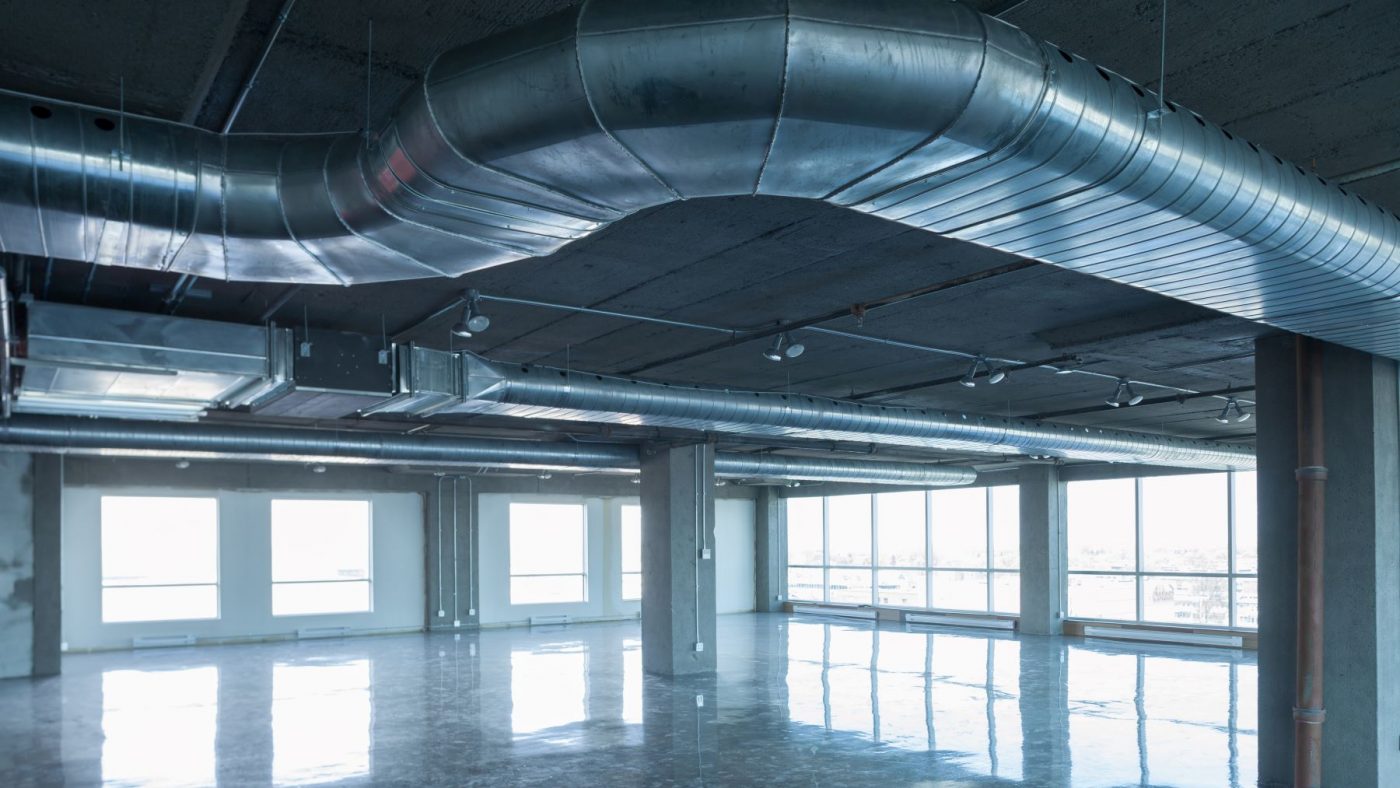As facilities throughout the northeast move from the cold winter weather into warmer spring and summer months, a host of indoor air quality (IAQ) issues can develop as heating, ventilation, and air conditioning (HVAC) systems switch from the heating seasons to the cooling seasons.
How Seasonal Changes Affect Indoor Air Quality
One of the primary changes that occur with these seasonal shifts is the need to humidify or dehumidify supplied conditioned air. During winter months, it is often necessary for conditioned air to be humidified, as relative humidity in outdoor air is much lesser at this time of year. However, as winter changes to spring, outdoor humidity levels will increase, necessitating the dehumidification of outdoor air as part of the conditioning process. The increased water volume (both liquid and vapor) within the HVAC unit can turn into dampness and potential microbial growth, stemming from excessive water in condensate pans, inadequate drainage, and/or blow-through of water droplets onto surfaces downstream. Indoor humidity plays a role in both human comfort (The American Society of Heating, Refrigerating and Air-Conditioning Engineers (ASHRAE) specifies that indoor relative humidity should range from 30-60%) and potential mold growth (the United States Environmental Protection Agency (USEPA) and ASHRAE recommend that the relative humidity should remain below 60% to control potential mold growth). Elevated indoor humidity and any microbial growth can contribute to decreased IAQ.
How Allergens Affect HVAC Systems
Springtime brings about the return of many migratory birds, who may be found nesting on the rooftops near outdoor air intakes. In addition, as anyone with seasonal allergies can attest to, springtime also brings about an increase in outdoor particulate matter, namely pollen. The primary function of the filters inside an HVAC unit is to reduce the amount of particulate matter and/or bioaerosol sources being introduced into the conditioned space. Dirty filters can become a source for air contamination by allergens, particularly fungal spores, and can then be trapped, colonized, and released downstream as the overloaded filter fails. The cleanliness of the filters (a) can also impede HVAC airflow, leading to those hot and cold spots and stuffy air, (b) can lead to increased energy costs, as the unit struggles to maintain specified airflow with these impediments, and (c) can result in increased HVAC service costs. Each of these issues, stemming from dirty HVAC filters, can contribute to decreased IAQ.
Commercial Indoor Air Quality Issues – Legionella
In larger commercial spaces or any facility with large heating and cooling needs, the need to dissipate the large volume of heat generated by the chilled water systems is often achieved through evaporation and cooling towers. These systems are sometimes operated only during the cooling seasons and are brought back on-line in the spring. In 2015, ANSI/ASHRAE published Standard 188: Legionellosis: Risk Management for Building Water Systems (updated in 2018), which is intended for the use by owners and managers of human-occupied buildings and those involved in the design, construction, operation, maintenance and service of centralized building water systems and components. Water management plans (a plan to reduce the risk of growth and spread of Legionella and other opportunistic waterborne pathogens) are currently required in the State of New York (under Title 10, Volume A, Part 4 – Protection against Legionella), as well as hospitals, critical access hospitals, and long-term care facilities subject to Centers of Medicare and Medicaid Services (CMS).
How Can VERTEX Help?
Having performed hundreds of IAQ surveys throughout the northeast and other parts of the US, VERTEX’s staff of mechanical engineers (ME), industrial hygienists, and certified industrial hygienists (CIH) have the tools and know-how to diagnose what seasonal variations may be contributing to decreased IAQ, as well as offer potential solutions. VERTEX has been at the forefront of waterborne pathogen management since New York State passed a set of emergency regulations in the summer of 2016. Our Programs comply with ANSI/ASHRAE Standard 188-2015, NSF Protocol 453, and applicable rules, regulations, and codes.
To learn more about VERTEX’s Industrial Hygiene & Building Sciences services or to speak with an Environmental Expert, call 888.298.5162 or submit an inquiry.



